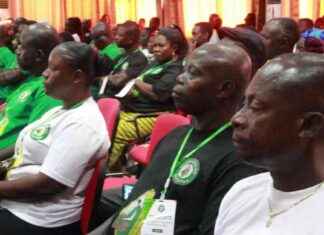When Anthony La Puente returned to the place he had called home for the past 16 years, there was almost nothing left. His house, like most of the houses in Lahaina, had been destroyed by the wildfire that ravaged this piece of Hawaiian paradise.
“The only thing I can say is that it hurts. It takes its toll on you emotionally,” said the 44-year-old man. “It sucks not being able to find the things you grew up with, or the things you remember,” he lamented.
La Puente was one of dozens of people allowed back into what used to be Lahaina on Friday. Situated on the island of Maui for hundreds of years, this town of 12,000 inhabitants was the proud home of the Hawaiian Royal Family.
Thousands of tourists visit it every year to enjoy its atmosphere, stroll along the picturesque boardwalk or lie down under a majestic banyan tree, considered the oldest in the United States.
An AFP team that toured the city on Friday found the blackened carcasses of cats, birds and other animals trapped in the flames that have so far left 80 people dead.
Power lines hung useless from damaged poles, and small pockets of fire continued to burn. Yellow “X’s” marked the chassis of vehicles lying unusable in the street, a signal to firefighters that they had been checked for victims. All over the city were piles of still-warm ash where family homes used to be.
Using the metal frame of a chair as a makeshift shovel, La Puente rummaged through what was once her kitchen and discovered a Starbucks container.
But the boxes of photographs, the memento of his 16 years in the house, were gone, including his late father’s most precious items.
“I had packed up my father’s belongings” hoping to sort them out at some point, he said. But that will never happen. “Now they are gone.”
Elsewhere, neighbors hugged each other with great euphoria. “You did it!” Chyna Cho yelled to Amber Langdon from among the ruins. “She was trying to find you,” she told him.
For Keith Todd it was an indescribable relief to see that his house was still standing and that the solar panels were still powering his kitchen.
“I couldn’t believe it,” Todd told AFP. “I’m so grateful, but at the same time it’s so devastating,” he mused, looking around at the unrecognizable rubble of what used to be the houses of his neighbors.
In the landscape, which even seemed to be bombed, there were pockets of improbable hope. Maria Lanakila Catholic Church was apparently intact, looming over the cinders of Waine’e Street.
The stone walls of the historic Hale Pa’ahao Prison still stood, but the wooden building used to punish wayward sailors was gone, 170 years of history obliterated.
A few blocks away, Front Street, where restaurants and clothing stores competed for views of the harbor, had disappeared.
The ships that had been moored in the dock days before were charred, melted or sunk. Among all these ruins, a gigantic banyan tree still stood, but its fate was uncertain, its branches devoid of green and its trunk covered in soot, transformed into a strange skeleton.
The tree has dominated Lahaina for 150 years, watching over an island nation that was an independent monarchy, then a US territory, and finally a full-fledged US state. The city it protected, however, has vanished.






